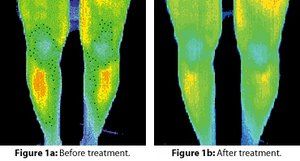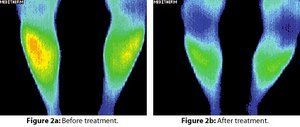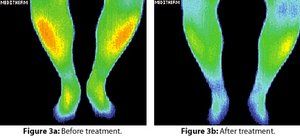Whether you accept it, avoid it or live somewhere in between, insurance coverage has become a defining issue for our profession. Patients increasingly expect to use their benefits, practitioners want to be compensated fairly for their time and expertise, and the system itself remains – at best – fragmented. The encouraging news is that coverage has expanded in meaningful ways. The challenging news is that reimbursement, across the board, remains inadequate.
Predictive Power of Meridian Theory
Early last year, I visited Shanghai and contacted my old friend Zhou Luwei, professor of physics at Fudan University. I knew him when he was chairman of the physics department, but he recently was promoted to the vice president in charge of all research activities at the university. I was glad to talk to him and shared with him that I have now been working in acupuncture. He then told me about the newly established Shanghai Research Center in Acupuncture, with initial funding of 20 million yuan (U.S. $250,000) directly from the central government. He asked if I would be willing to talk to researchers there. I was, of course, most willing to talk to the faculty, as Fudan University is one of the 10 most prestigious universities in China, and also supplied the first director, Prof. Ding Guanghong, to the research center.
After I spoke to the researchers about applying quantum theory to acupuncture, I was even more eager to meet Prof. Fei Lun, whose groups have worked on infrared transmission along the meridian. (I believe this was a landmark in making the infrared imaging method important in Chinese medicine.) A retired man in his 70s, Prof. Fei Lun was most willing to share with me all the results he had obtained over the past 15 years on the material structure of meridians. These results were obtained by precise modern physics equipment, such as the proton accelerator and the electron microscope. (For more information on modern physics equipment, visit www.qluni.org or www.lifephysics.net.) One of the most important results Prof. Fei Lun's group found was that the stomach meridian transmitted infrared at wavelength 9-20 um more than 200 times favorably along the direction of meridian, rather than perpendicular to it.
This important result can be restated simply as: "Meridians are like infrared transparent optical fibers." If this idea were right, then it has predictive power. The first case I looked at is the Stomach meridian. If the Stomach meridian acted like an infrared transparent optical fiber, what consequence would there be? If the stomach was in trouble and in fever, it would be hot and transmit much more infrared along its meridian to places away from the stomach. It also would be detected by an infrared camera at the acupoints where the Stomach meridian is closer to the surface. I looked at St 36, the acupoint just below the knee.
Indeed, I found that for many patients who had stomach problems, we can see a heated area around acupoint St 36, as shown in the following images. (The color code for infrared pictures is: White is the hottest, then red, yellow, green and blue, with the coldest color in black.)
Patient A had suffered stomach problems for a long time. This infrared picture was taken on the frontal view of the patient's two legs. Figure 1a shows the frontal picture of the patient's two legs before treatment, which had a hot red area around St 36. After treatment with external qi for 10 minutes, the red area diminished greatly, as shown in Figure 1b.
The maximum temperature was 94.53 F before treatment (Figure 1a) and 93.26 F after treatment (Figure 1b) - a reduction of 1.3 F.

Patient B had acute stomach pain. His legs are shown below. Figure 2a was taken before treatment and Figure 2b was taken after 10 minutes of treatment with external qi. Note that the hot area in red on the right leg around the St 36 region vanished after treatment.
The maximum temperature before treatment (Figure 2a) was 93.14 F, compared to only 90.3 F after treatment (Figure 2b) - a reduction of 2.8 F.

Patient C had serious stomach trouble. Maximum temperature before treatment was 91.37 F, which was reduced to 89.71 F, a reduction of 1.66 F, after 10 minutes of treatment with external qi.

Patient D had other problems, but no stomach problem. Figure 4a shows the frontal view of her two legs before treatment and Figure 4b shows the same legs after treatment with external qi for 10 minutes. Patient D served as a control.
Maximum temperature of the legs before treatment was 87.58 F versus 88.17 F (a slight increase in temperature) after treatment with external qi for 10 minutes.
So far, for all the patients I have examined and studied with infrared imaging techniques in the last several years, I have found no exception to this rule: All patients who have stomach problems have a very hot area around St 36.

The next interesting question to explore was: What other things can meridians predict? So, I scratched my head and looked through my file. My guess was that patients with thyroid problems not seen on the throat region with infrared imaging methods had thick layers of tissue between the thyroid and skin, thus preventing infrared light from emerging on top of the thyroid in the throat region. However, its heat might be carried by the Stomach meridian down a bit below and around the shoulder area (St 11 and St 12). Thus, we might look for hot regions around the meridian along the St 11 and St 12 shoulder area. Indeed, I found my hypothesis was confirmed. The data for two patients E and F are shown in the following images.
Patient E came to see me with prostrate cancer. After I found a hot area in his shoulder, I asked him whether he had thyroid problems. He said he had tolerated it for many years.
Infrared pictures of the face and shoulder region for patient E showed that the maximum temperature on the shoulder area was 99.6 F, which was reduced to 97.33 F (a reduction of 2.3 F) after treatment with external qi for 10 minutes.

Patient F originally came to see me for hot flashes and a tear in her spinal cord disc, among other things. However, from the infrared pictures, I realized she had a thyroid problem and mentioned this to her. She agreed and said she had forgotten to mention it because she had dealt with it for many years. Figure 6a was taken before treatment and clearly shows a hot, red area around St 11, which then diminished greatly after 10 minutes of external qi treatment, as shown in Figure 6b.
The maximum temperature before treatment on the shoulder area was 96.2 F, which was reduced to 95.29 F (a reduction of 1 F) after treatment with external qi for 10 minutes.

In summary, a modern idea of meridians acting like infrared transparent optical fiber provides us with many predictions on the conditions of internal organs, which can be substantiated with numerical data from an infrared image system.
I hope many more acupuncturists will use the information provided by the infrared imaging method to predict internal problems (through meridian theory) that are not so easily detected otherwise. The infrared imaging method has many advantages, including its non-invasive technique, availability to view instantly, and its intuitive interpretation. Most importantly, the effect of any treatment can be checked right away to see if it has any positive effect.
In modern science, if a theory starts to make predictions that can be confirmed by experimental evidence later, it shows great strength of the theory.



